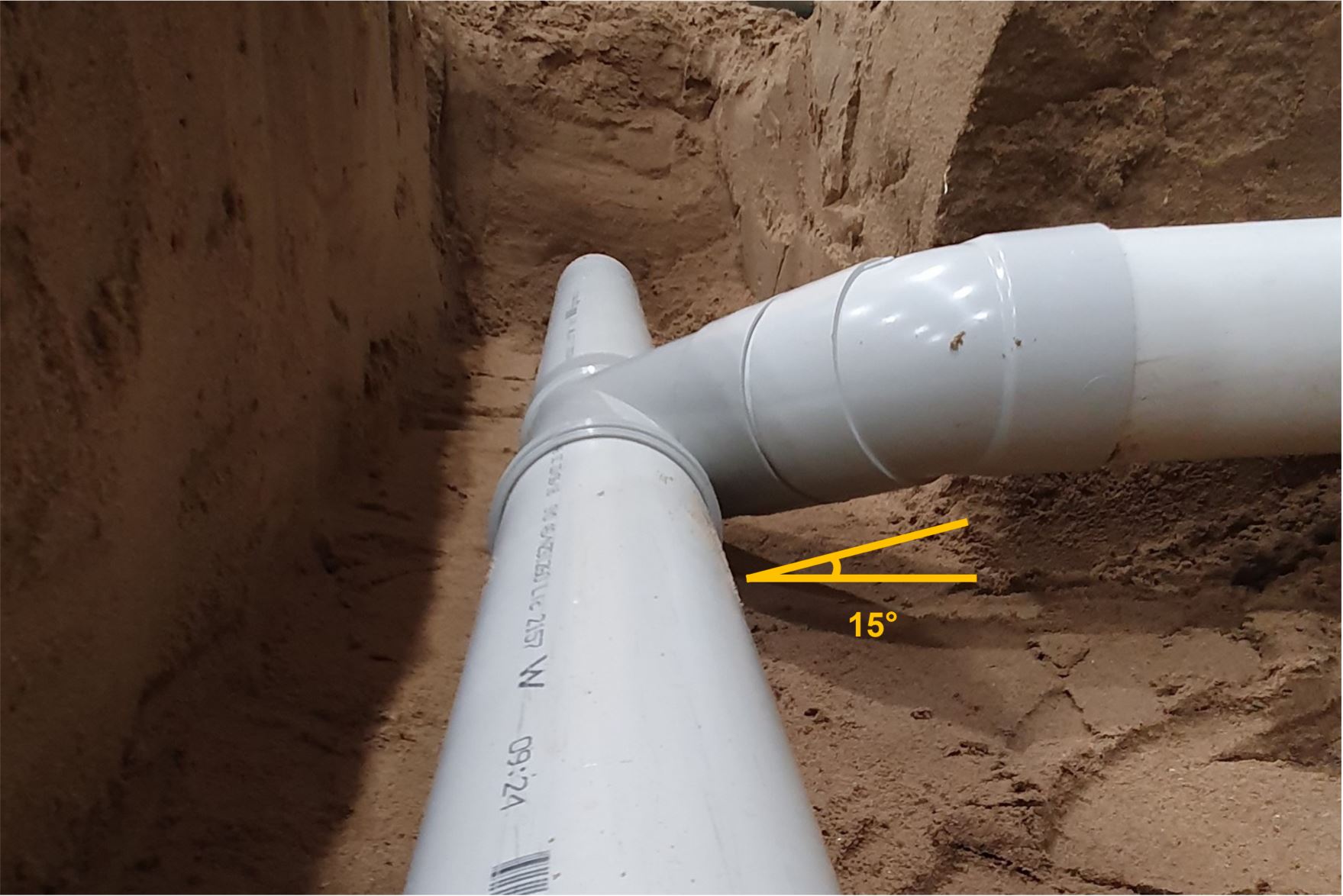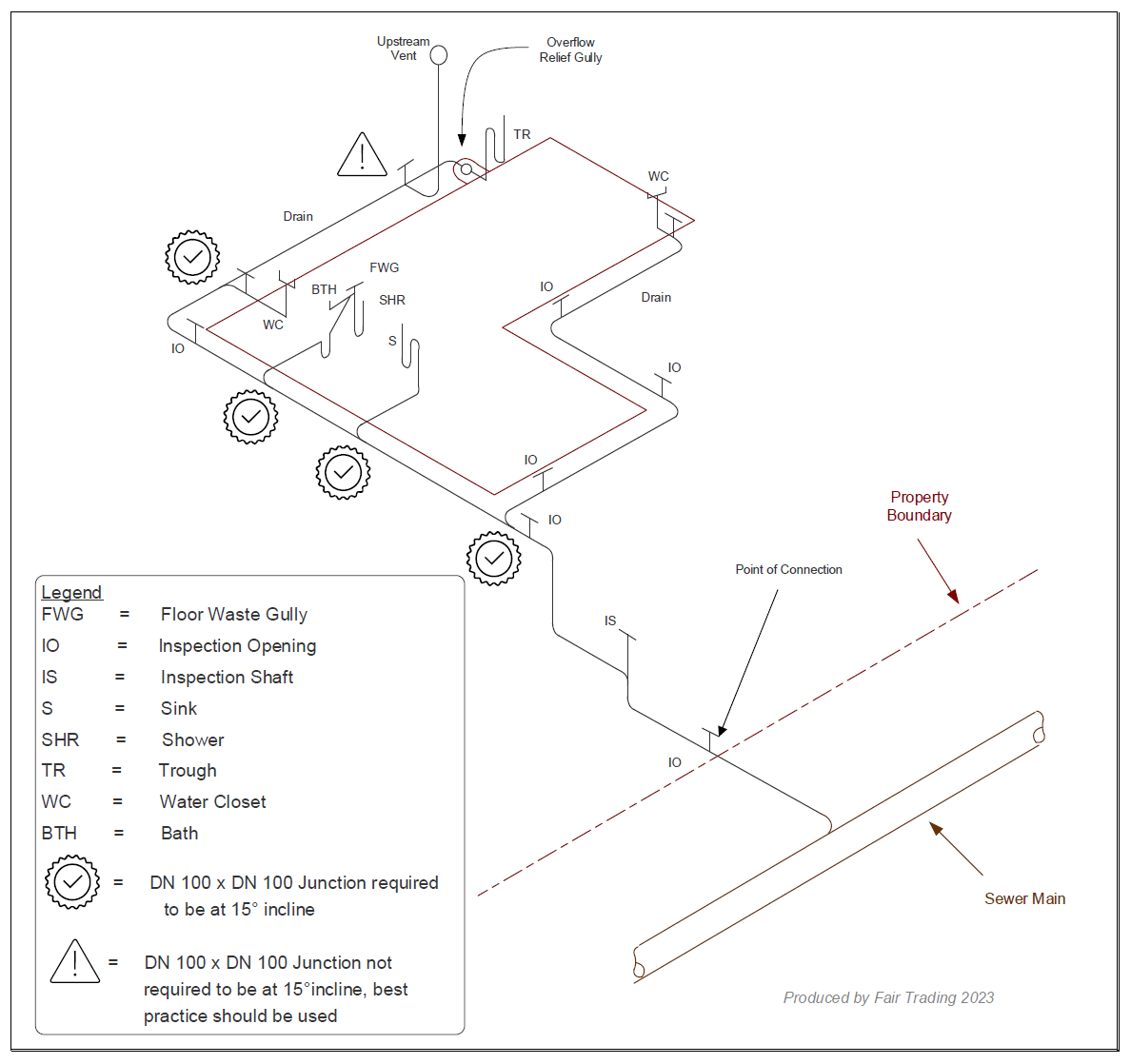| Advisory note | 14/2021 |
| For | Licensees / Contractors / the Plumbing and Drainage Industry |
| Scope | Applies to all metropolitan and regional areas in NSW |
Issue
With the adoption of the Plumbing Code of Australia (PCA) 2022 on the 1 May 2023, NSW Fair Trading is informing the plumbing and drainage industry to the new requirements to junctions at grade that will take effect. The PCA prescribes the Deemed-to-Satisfy (DTS) requirements for sanitary plumbing and drainage systems to comply with AS/NZS 3500.2:2021.
New clauses have been included to AS/NZS 3500.2:2021 prescribing where DN 100 x DN 100 junctions are used at grade shall be elevated at an incline of not less than 15° above the horizontal.
Limited circumstances where the junctions do not require to be elevated are also prescribed.
The inclusion of clauses prescribing DN 100 x DN 100 junctions used on grade requiring to be elevated at 15° above the horizontal is based on industry research indicating that there is a backwash effect into the branch of junctions installed at less than 15°, causing stranding of solids that can lead to blockages in pipes.
Clause detail
AS/NZS 3500.2:2021 - Sanitary Plumbing and Drainage
Clauses 4.9.1.2 and 6.6.2.4.2 - New Installations
Where a junction is used to make the connection of a DN 100 branch drain / pipe to another DN100 drain / pipe, the entry level of the branch drain / pipe shall be elevated at an incline of not less than 15° above the horizontal.
Note 1: See Figure 4.9.1(a) for a typical example of a branch drain entering another drain.
Note 2: Positioning the junction a minimum of 15° above the horizontal removes the probability of the partial backwash of discharge into the branch drain causing stranding that can lead to blockages in the drain.
Note 3: Refer to AS/NZS 3500.0 for the definition of a branch drain
Clauses 4.9.1.3 and 6.6.2.4.3 - Other Installations
The entry level of the branch drain / pipe may be on grade –
(a) for repairs or extensions to existing installations;
(b) where WC pans are not connected upstream; or
(c) where the main and branch drains are not DN 100
Note: Where sufficient height is available in existing installations to avoid the potential for blockages, it is recommended the provisions of Clause 4.9.1.2 be followed.
In addition to the above clauses, junctions at grade must also comply with the requirements prescribed in Clauses 4.9.1.1, 6.6.2.1 and 6.6.2.4.1
Regulatory commentary
The new requirements apply to instances when installing Sanitary Drainage and Sanitary Plumbing (Stackwork).
All new DN 100 x DN 100 junctions at grade are to be installed with the entry level of the branch to be elevated at an incline of not less than 15° above the horizontal where a WC pan is connected upstream of both the main and branch of that junction.
A DN 100 x DN 100 junction is not required to be installed with a 15° incline to the branch where there is no WC pan upstream, or where the junctions is to be for the repair to an existing installation, or where the junction is to extend an existing installation.
Best practice should be used where possible to install all new DN 100 x DN 100 junctions at not less than 15° incline to avoid backwash effect into the branch of junctions.
Junctions are not required to be installed with a 15° incline where the main or branch drain of the junction are not DN 100.
Typical example of junction at grade with 15° incline

Example of junctions requirements in a drainage installation
Note:
Information contained within this document is current as of February 2023 and refers to codes and
standards current at the time of writing.
NSW Fair Trading disclaims any liability (including for negligence) to any person in respect of
anything done, or not done, by that person in whole or partial reliance on any of the information in
this advisory note.
